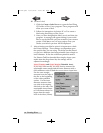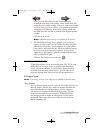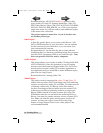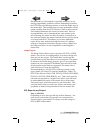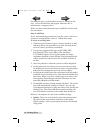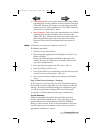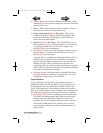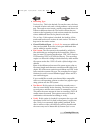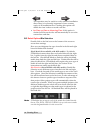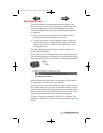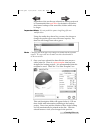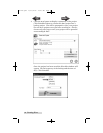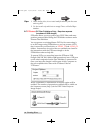
Creating Discs 21
• Recording Type.
Track-at-Once. This is the default. For track at once, the laser
is turned off after each track, which produces a two-second
gap. The track-at-once feature, enables songs and data to be
written at different intervals. The lead-in sectors that are
written at the beginning of each session contain the location
where additional data can be placed on the disc.
Disc-at-Once. If this option is checked, the lead-in, all the
tracks and lead-out are written in same action. The laser is
kept on for the entire session.
• Closed-Finalized/Open. A closed disc means no additional
data can be added. If the disc is left open additional data
can be added in another session.
• File System. The file system is the method by which the
files and folder are arranged on the burned disc. Joliet is
best for most CD burning applications. UDF 1.02 is best for
DVD burning. UDF 2.6 is used for Blu-ray. The recording
engine can also add a bridge which effectively adds another
file system to the disc. UDF 1.02 with a Joliet bridge is the
default.
Most of the differences between file system types relate to
file name length and character restrictions and folder level
depth. ISO is the most restrictive and oldest and UDF is the
least restrictive newest file type. The complete list of speci-
fications for each is several hundred pages. Macs and PCs
can read both types.
If you would like to make your burned disc compatible
with very old operating systems or other less popular oper-
ating systems use the ISO system.
• Test Record. If this option is checked the recorder tests a
disc for record ability before burning. The drive laser is set
to read power and the entire surface is scanned for errors.
This takes the same amount of time as recording. (DVD+R
media cannot be tested) This options can not be used in
combination with normal recording or verify.
• Verify. If this option is checked, it compares the copy with
the master bit for bit. If it finds a discrepancy it rejects the
disc. Verify is an extremely high quality standard. If the
disc is audio or video, the discs may still be playable and
the errors may not be detectable by human eyes or ears.
511276.qxd 11/23/2010 10:43 AM Page 21
INDEXINDEX
TOC




